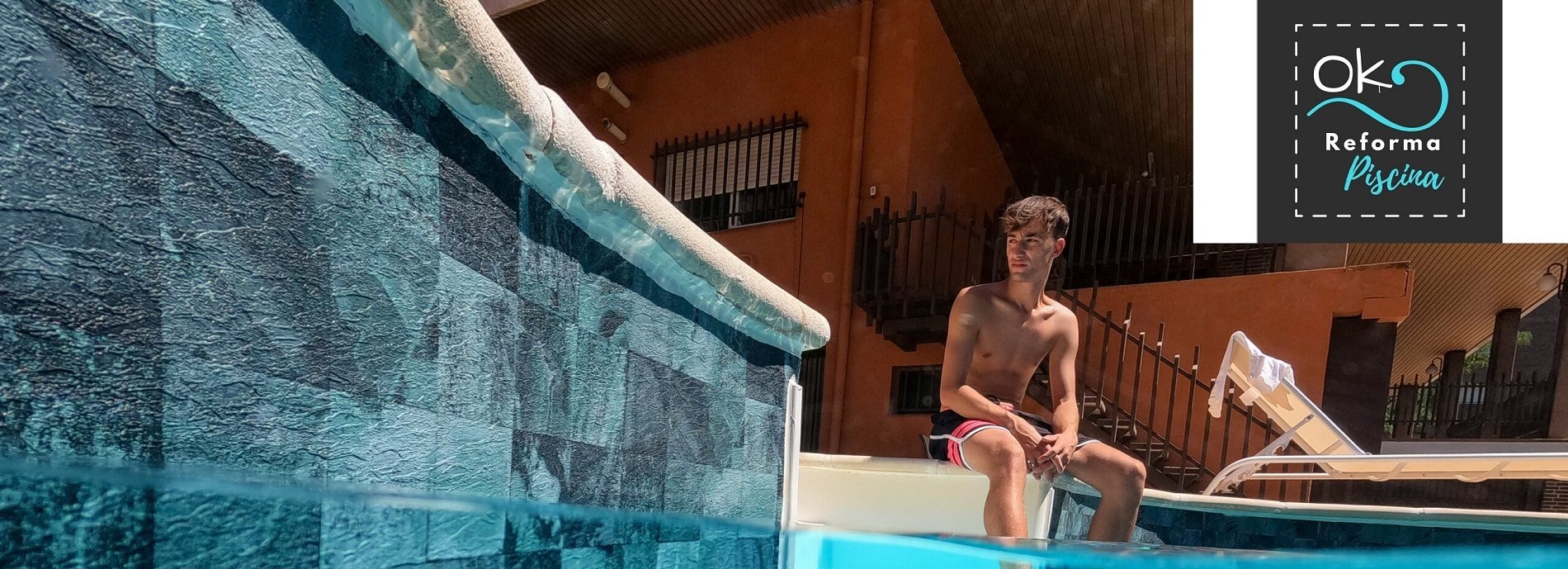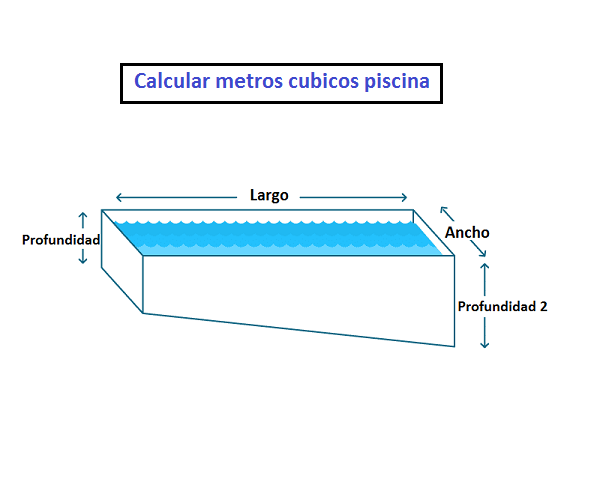
Table of contents of the page
En Ok Pool Reform and within the category of Main Causes of Water Leaks in Swimming Pools and How to Detect Them we leave you with this page What happens if water gets behind the pool liner?
What happens if water gets behind the pool liner?

What happens if water gets behind the pool liner: Structural damage
One of the most common problems that can arise with a pool is when water comes into contact with its structure.
If left untreated, water pooled behind your pool liner can cause significant damage to walls and other surfaces around your home, so it's essential to act quickly to avoid costly repairs.
This creates rust and corrosion that can damage the pool shell material, walls or rim, which in turn can compromise the stability and integrity of the entire pool.
Why is it important to find the cause of damage from water getting behind the pool liner?

Eradicating and not damaging the structure of the pool will depend on us eradicating the problem
Cracks in a pool can be caused by a number of factors, including stress on the structure, damage to the concrete surface, or changes in temperature and humidity.
- To evaluate and address these cracks effectively, it is important to work with a qualified professional who can diagnose the root cause of the cracks and determine an appropriate solution to strengthen the affected areas.
- Thus, if the cracks are primarily located in a specific area of the pool, they may not pose a significant risk.
- However, If multiple areas of the pool are affected by deep or widespread cracks, this could cause serious structural damage and compromise the integrity of the pool's watertight seal.
Measures to avoid water behind pool lining

Take proactive measures to check the pool glass
While this problem cannot always be prevented, there are certain steps you can take to help minimize its occurrence, such as having a routine of monitoring the different elements of the pool.
- Given these risks, it is essential that pool owners take proactive steps to identify and address cracks before they become a major problem.
- This may involve working with a pool repair professional to perform a structural evaluation or taking other measures, such as adding supports or reinforcements to mitigate damage caused by cracks.
- Ultimately, it is important for pool owners to be vigilant in monitoring their pools for signs of potential problems and address them immediately to protect their investment and ensure optimal safety and operation.
- For this reason, we encourage you to make it a habit to do a general check of the pool once a month.
Don't forget the maintenance of a pool
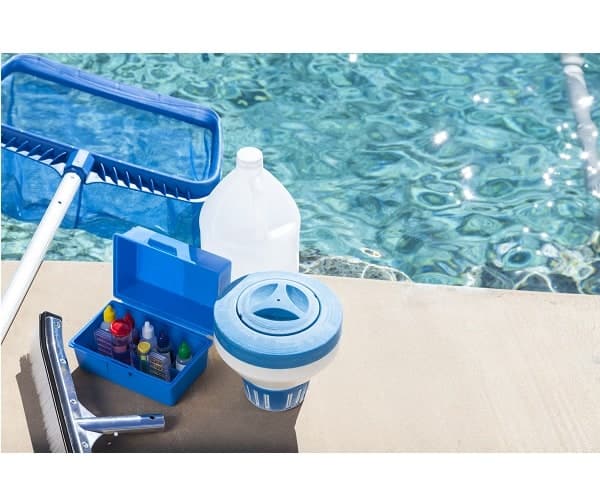
Useful guide to know how to clean the pool
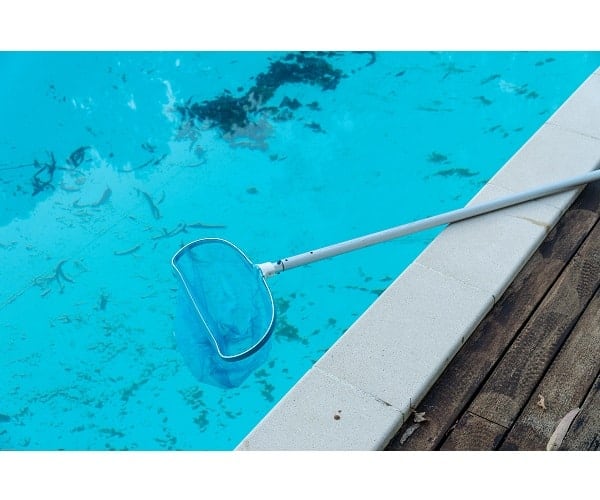
Guide to maintaining a pool with water in perfect condition

Schedule pool maintenance routines
water prevention policyFor this reason, we encourage you to make it a habit to do a general check of the pool once a month.
- For this reason, we encourage you to make it a habit to do a general check of the pool once a month.
Water check points behind the pool liner
Next, we mention the procedure for recognizing the different aspects of the pool (as an introduction) and later we detail each one.

Issues that can affect water filtration behind the pool liner
- Pool water level
- Condition of the pool structure
- Coating with fissures, cracks, cracks...
- Record all possible cracks along with the joints on the pool surfaces, looking for poor sealing or cracks.
- Check that the pool liner is not cracked or damaged.
- Pool edge finish condition
- Check glass interior accessories
- Look for cracks in the contours of the pool
First of all: Check if there is water loss from the pool

Examining the water lost by the pool will tell us if there really is a leak or not.
Inspect if the water loss from the glass is within the normal range.
Pool water loss level within normal range
- Although, as a fairly general rule, a pool can lose its 2 to 3,75cm of water per week due to climatological causes (evaporation), of use or of the filtering system itself.
Check that the pool is not too full
- First, check your water level and make sure it is not too full by more than an inch from normal levels.
- If it is overfilling, adjust the fill valve accordingly.
- Finally, closely monitor the water levels in your pool to catch any problems early on, and contact a professional if you suspect a problem with your pool wall.
From regularly maintaining the water level and sealing any gaps to monitoring your pool wall for signs of damage, there are a number of steps you can take to prevent and address leaks behind your pool liner.
Locate water leak behind structure or tile coating
Check the condition of the walls and floor of the pool
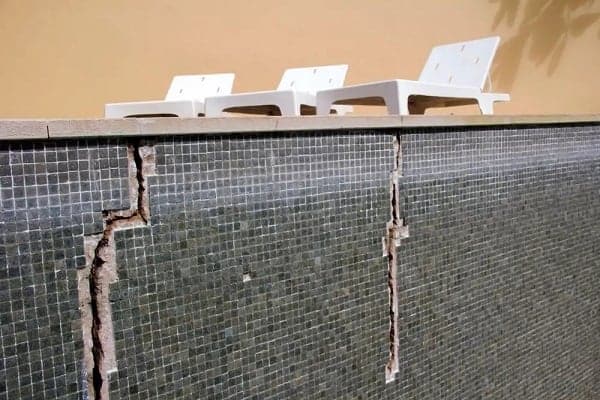
Water seeps through these cracks and flows to the areas where it pools. If you notice cracks in the walls or floor of your pool deck, have them repaired by a professional as soon as possible to prevent water from seeping through them.
Additionally, you should regularly check for signs of leaks (such as wet spots on concrete surfaces) and contact a professional if you spot any problems.
There are cracks or fallen pieces in the pool tile

Crack in pool tile: In some cases, leaks may be due to cracks in the surface material.
If this is the case, you will need to repair or replace these areas as soon as possible to prevent further damage and preserve the structural integrity of your pool.
Although, normally when you find yourself in this situation, the best thing to guarantee the tightness and safety of the pool is to install a reinforced sheet on top.
100% GUARANTEED solution to water loss from pool structure or tile coating
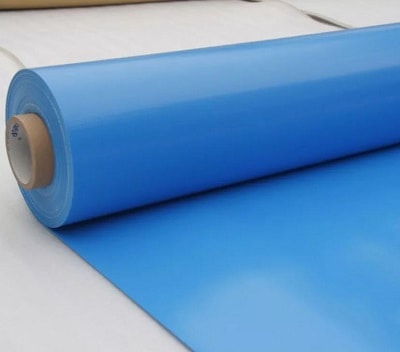
What material is the liner for armed pools?
What material are reinforced sheet pools made of?
The pool liner is a type of pool liner with reinforced sheet, decorative and waterproof reinforced membrane or liner for pools formed by two flexible membranes intended for the repair of pools, and made with plasticized polyvinyl chloride (PVC-P). .
Why do pockets of pool water appear behind the pool liner?
Cause of water accumulation behind the pool liner

Explanations for Water Buildup Behind Your Vinyl Siding
If you notice signs of water buildup behind your vinyl siding seeping or leaking, there are a few things you can do to fix this problem before it worsens.
In fact, there are a few reasons why water can pool behind vinyl pool liners.

Detecting the signs of water loss behind the pool wall liner
Record all possible cracks along with the joints on the pool surfaces, looking for poor sealing or cracks.
One of the most common is that hairline cracks have formed in the mortar bed or concrete pad around the pool.
- The first step is to check all areas and joints between the concrete surfaces and the coating welds themselves that come into contact with each other for signs of leaks and to check if they are still decently sealed.
- In turn, the liquid PVC weld sealant must be intact between the parts of the pool liner coating.

Source of water accumulation behind the pool liner
Check that the pool liner is not cracked or damaged
- Remember that if the assembled liner is damaged, normally the most effective solution is to solve the root problem with a change since patches and fixes of this type do not work decently.

Source of water accumulation behind the pool liner
Pool edge finish condition
What does a collaminated profile look like?
- Keep an eye on the aluminum profile on the pool wall, below the coping stone. This is necessary to solder the Liner.
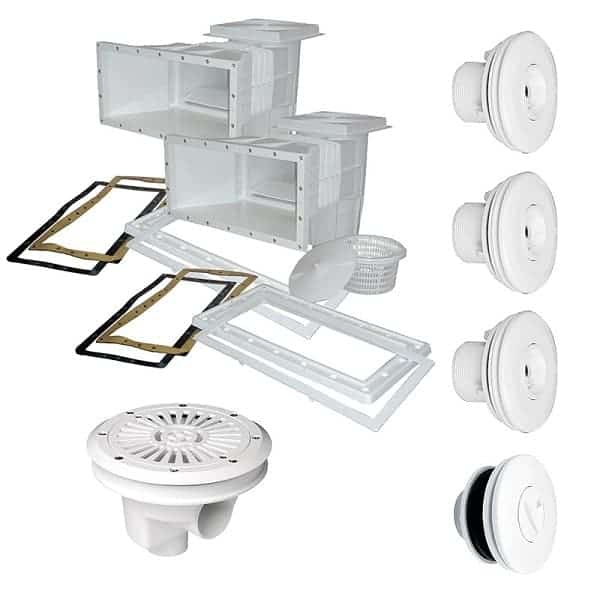
Basis for water accumulation behind the pool liner
Check how the accessories inside the glass
- You can also check the inside and outside of the skimmer or return lines for leaks.
Check all the surrounding areas around the pool

Look for cracks in the contours of the pool
inspect the ground around the pool
- At the same time, Make sure your pool is firmly anchored in the ground and that there are no gaps between it and the surrounding surface.
- Another cause may be poor soil drainage, especially if your pool is located on a slope or slope.
- In this case, too much water can accumulate along the outer perimeter of your siding.
- If there are no visible cracks and you think poor soil drainage may be causing this problem, there are some steps you can take to improve it.
- One option is to add gutter extensions to create a more gradual slope away from the pool.
- You can also raise sloping ground away from the pool if it seems too steep or uneven.
- And it can also be caused by poor sealing of the pool's top finish; that is, from the edge of the pool
After making these adjustments, you should see an improvement in surface water drainage and should no longer experience problems with pool water pooling behind your vinyl liners.
